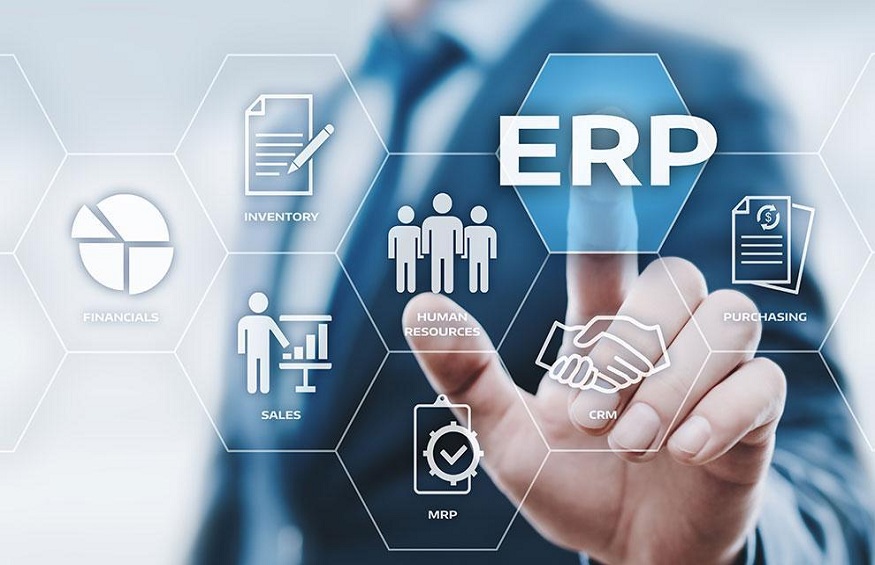Because even if many know the definition of an ERP ( Enterprise Resource Planning ), a vast majority cannot say how the software package operates on a daily basis.
Yes, the functionalities of an ERP are also impressive. So to allow you to familiarize yourself with the practical side of an enterprise resource planning ERP software package, we have prepared a small overview of its modules and functionalities. You will see how the software can interfere in several spheres of your company in order to help you increase your productivity and remain competitive.
But first, a definition of ERP software
An ERP is defined as enterprise resource planning software. That is to say, it is a unique solution that integrates a multitude of applications, functionalities and modules in order to allow you to have a complete vision of your company, but also to optimize all its processes .
Project management
And you can find other components like a CRM module for sales and marketing, business analysis, human resources or even customer management.
While CRM focuses more on customer relationship management and all that surrounds it, you can expect a greater range of functionality in an ERP. For what? Because to offer you a more complete and efficient solution, an ERP seeks to help you in all departments of your company: from finance to the supply chain and even marketing. Thus, your choice of ERP will stop depending on your needs and what the software can offer you.
Functions of an ERP software: Financial management
And when it comes to understanding and helping a business across all of its departments, finance is probably the most central sector. It’s where accounts receivable meets supplier invoices, and ultimately, it’s also where a lot of decisions are made.
Analysis Chart: Powerful financial reporting tool that can help accountants and financial analysts extract the most essential business data from account charts, budgets, current accounts and cost types to transform them financial reports, which can be used to monitor the health of the business and provide valuable advice to company decision makers.
Accounting: This module includes all the basic functions needed to set up a company and enter information into the general ledger, chart of accounts, general journals, VAT lines, recurring journals and source codes.
Basic XBRL: Export documents from Microsoft Dynamics NAV in an XBRL format and import XBRL taxonomies into Microsoft Dynamics NAV from the Internet, email or other systems.
Consolidation: Consolidate companies in your ERP. Companies can come from one or more different ERP databases or other files, and you can import and export financial information in this module.
Deferrals/deferrals: Setup of deferral templates that automate the deferred income and expense process instead of a predefined schedule.
Budgets: A tool that works with general ledger account budgets. After creating a budget, you can print a balance sheet that shows the budget variants by percentage.
Change Log: You can enter all direct changes a user makes to data in the database, except for changes to “working papers” such as logs, orders, and purchases.
Management center: Configuration of a profit center or cost center. A company can sell items with specific prices that are linked to a management center.
Cost Accounting: Cost accounting offers an effective way to control a company’s costs by providing visibility and information on planned and current costs of operations, departments, products and projects.
Basic fixed assets: Keep an eye on fixed assets such as buildings, machinery and equipment.
Cash Forecast: The cash forecast provides a prediction of how a company’s liquidity (both cash and cash) will evolve over time.
Fixed Asset Allocation: Allocate different percentages of fixed asset transactions, such as acquisition costs and depreciation, to different departments or projects using allocation keys.
So in general, in the functionalities of an ERP, you will be able to find a basic module which includes all the functionalities which help you to establish a company, and, among other things, send information to the general ledger, to the charter of accounts, general journal, VAT lines, recurring journals and source codes.
Reclassification: To reclassify an asset or part of an asset – for example, from one department to another. You can split a fixed asset into multiple assets, or combine multiple fixed assets into a single fixed asset.
Account calendars, general ledger allocation, XBRL export, cash flow forecasting and many other features await you in your ERP for both your fixed assets and your general financial management needs.
Functions of an ERP software: Money management
Without a doubt, the best ERPs will offer you functionalities designed specifically to help you with money management: bank accounts, electronic payments and direct transfers, check writing and even the reconciliation of your bank accounts or banking transactions of income and expenses.
Basic dimensions : Add additional dimensions to the general ledger and any other ledger in an ERP for greater flexibility when working with analysis tools.
Advanced Dimensions : Advanced dimensions provide unlimited dimensions for use in transactions across all ledgers.
Multiple Currencies: Manage multiple currencies across the system, including accounts payable and receivable, general ledger reports, resource and inventory items, and bank accounts.
Bank Account Management : Create, operate and manage multiple bank accounts to serve your various business needs, across different currencies.
Electronic payments and direct transfers : Create payment submissions based on supplier documents and generate bank payment files in an ISO20022/SEPA format or use the Bank Data Conversion Service for other file types.
Reconciliation of incoming and outgoing bank transactions : Import bank statement data from electronic files sent by the bank in ISO20022/SEPA format or use the Bank Data Conversion Service for other types of files.
Bank Account Reconciliation : Automatically reconcile your bank statement data to open bank account entries and keep tabs on all your bank statements.
Alternate Ship To : Set up multiple “Ship To” addresses to accommodate customers who, in addition to a primary address, have more than one location where they want to receive their deliveries.
Obviously, financial management is an important part of an ERP. So, it is imperative to seek to have a complete solution in order to receive all the support necessary to manage your company.
Functions of an ERP software: Supply management (SMC)
Whether for service, retail or production companies, supply management is an essential module to improve the performance and efficiency of our businesses.
Sales and Accounts Receivable
Basic receivables: Set up and maintain a specific table for the customer. Post Sales Transactions to Journals and Manage Accounts Receivable: Record customers and manage their accounts receivable using general journals.
Calendars: Configure calendars with working and non-working days. Assign a baseline schedule to customers, vendors, sites, companies, delivery services, and facilities management, and make changes as needed for each.

